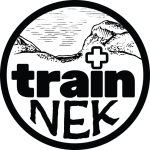COVID

We look forward to having you in a course soon, where we follow best practices (and any state guidance, as it comes).
- With the end goal of learning how to treat human beings, participants must be willing to be paired up with other students – or (as room allows), they should bring their own non-socially distanced “patient partner*” (who can audit for free).
- Courses are held under and around covered outdoor spaces, and occasionally in well-ventilated indoor spaces, with access to clean and sanitized washrooms or portalets and hands-free hand wash stations with soap and running water.
- Each person will wear a face mask as a default when practicing patient care and using shared restroom facilities. (You and your partner can decide if you want to do this or not during scenarios.) There is ample room to move further apart and remove masks as needed.
- Participants who feel ill should not come to class. Anyone needing to reschedule for any reason will receive a full refund or credit for another course, no questions asked. We don’t cancel classes due to low enrollment as long as we have at least two registrants who can work together.

COVID “Patient Partners” FAQs
Why Do I Need to Partner with Someone?
Our main goal is to teach you how to assess and respond to patients with traumatic and medical conditions in the backcountry. Train NEK students work in pairs or small pods to practice critical backcountry provider skills such as rolling patients, assessing breathing, performing physical exams, splinting arms and legs, stabilizing pelvic fractures, etc. – all with real-time feedback from a real person. Additionally, WFR students perform some group activities such as lifting and moving patients.
What Does It Look Like for Me to be Paired with Another Student?
You and your partner will have room to be socially distanced during lectures as you like. You’re asked to wear gloves in addition to well-fitting face masks during close-up practical sessions, unless you and your partner decide otherwise. And, since the course takes place entirely outdoors, there is endless ventilation. That said, it is not without risk. You should feel free to request of each other any fewer or further measures that make you more comfortable.
* What Does It Look Like for Me to Bring My Own “Patient Partner”?
If you prefer to bring your own “patient partner” they can either register for the course as any other student would, or audit the course at no cost. If they want to audit, please provide us with their name and email address so we can make sure there is room in the course for them and share important logistical information with them.
Your “patient partner” should be prepared to be an active and important part of your learning, whether or not they seek certification. Since students learn a LOT by taking turns being a patient, the ideal buddy is one who participates fully and takes turns “rescuing” you – and who has been listening to the lectures and so can give credible feedback. We heartily welcome your patient partner to audit at no cost, but if they are completely disinterested in the material you might prefer partnering with another student. This is especially important for the eight-day WFR.

Why Give a Choice? We Don’t Choose Our Patients in Real Life.
As emergency care providers we try to be prepared to treat anyone at any time, taking precautions to limit everyone’s risk. Regardless of who you have as your patient, you’ll learn how to take full infection control precautions so you leave the course confident in your abilities to do so.
That said, everyone has a different comfort level while learning in this climate. For some, having a non-socially distanced partner allows them to relax and focus on the material more. We’re able to offer a choice and so we do, so students can take responsibility for their own comfort level.
Do Non-Certifying “Patient Partners” Need to be Continually Present?
For Wilderness First Aid: Yes.
For Wilderness First Responder: You could get by without a partner on Days Two and Eight. Day Two is all CPR, when the focus is the manikin, and on Day Eight there are no practical sessions unless someone needs to retake their practical exam. There will also be smaller chunks of time here and there (usually 30 to 60 minutes) when a partner could zone out for a bit or walk to get coffee – but we can’t predict when those times will come as there are so many moving parts. We’ll do our best to give you advance notice when possible.
Please let us know if you have any questions at all!

© Train NEK | Wilderness Medicine 2020
